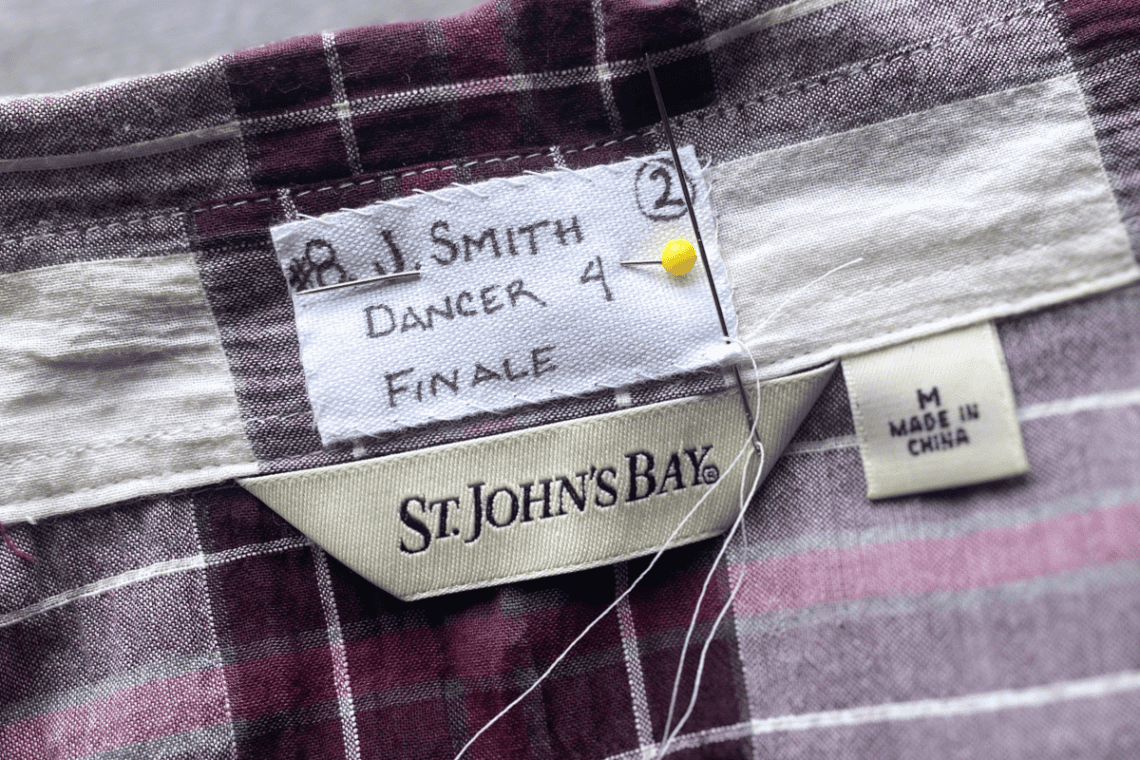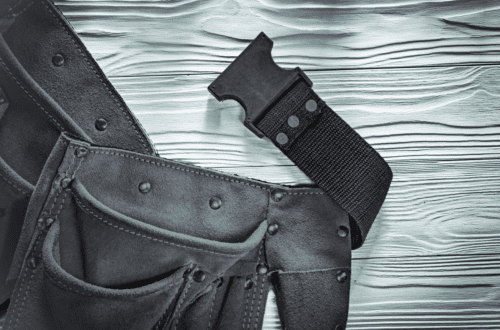In theatre, costume labeling is an essential part of the wardrobe process. It helps to keep track of costumes and ensure that they are returned to the correct actors. There are a few different ways to label costumes, and the best method will vary depending on the specific production. However, there are some general tips that can be followed to ensure that costumes are labeled effectively.
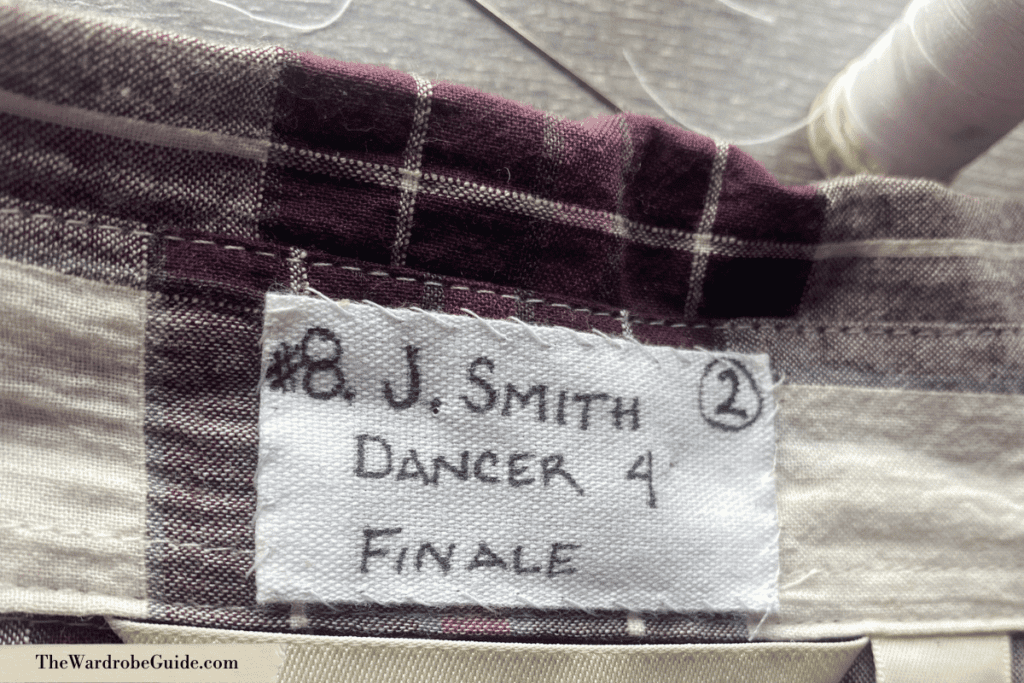
We will discuss everything you need to know to label costumes for theater. It will cover the different types of labels, how to create them, and how to apply them to costumes. It will also provide some tips for keeping track of labeled costumes. Whether you are a seasoned professional or just getting started, by following the tips in this article, you can ensure that your costumes are labeled effectively.
This post may contain affiliate links. We only recommend products we have tried and tested ourselves. If you use these links to purchase something, we may earn a small commission at no additional cost to you. These links help us cover the running costs of The Wardrobe Guide! Read our full disclaimer.
Why is Labeling Important?
When working with a large volume of clothing, labeling helps you stay organized. Especially on shows with large ensembles, or shows where there are multiples of a specific piece. On any Broadway show, one of the first tasks that the wardrobe team undertakes is to label all the pieces in the show before heading into tech.
Especially if you are working on a production that has understudies or swing dressers running the show often, you want to organize a surefire way that people will be able to identify costume pieces quickly. It is not uncommon for an actor’s costume piece to accidentally get mixed into an understudy’s section during a switch-out. Labels also help out-of-house workers such as the dry cleaners identify that an article of clothing belongs to you.
Another kind of labeling that might happen at a regional level is labeling costumes for the rental houses they are rented from. This kind of labeling is important because it will make things easier for you during strike when you have to ship all the rental costumes back to their origin theatres.
Information Included on a Theatre Costume Label
- Actor’s name– try to keep the formatting of the actor’s name consistent throughout the whole show.
- Character name– this information is important for actors who play multiple characters throughout the show.
- Song or scene number
- Double # -If there is a double of this item, number the doubles. This will help the dressers and the laundry workers keep track of the item’s rotation.
- Optional: show or theatre name– This information is helpful in a place like NYC because there is a high likelihood many pieces will leave the theatre at one time or another. Having the show’s name on the label helps the off-site shops remember whose pieces they are handling.

Best Pens for Labeling?
- Industrial sharpie
- Laundry pens
Labeling Costumes for Durability
Whenever possible, try to sew the label in by machine. This will make it so the label stays in the clothing longer and doesn’t fall out as easily. On costume pieces such as denim jeans, or undergarments such as petticoats, the audience will never be able to see the stitch line from a label in the back of the garment.
When it is not possible to stitch the label via machine, make sure your hand stitches are strong and tight. Also, be sure to stitch around the entire circumference of the label.
Labeling for Rental Costumes
A great way to label rental costumes is to use the small gold size 0 safety pins, and a couple different colors of ribbon. Make yourself a key of what theatre each color of ribbon denotes. Then, pin the ribbon into the rented costume pieces next to your name tags.
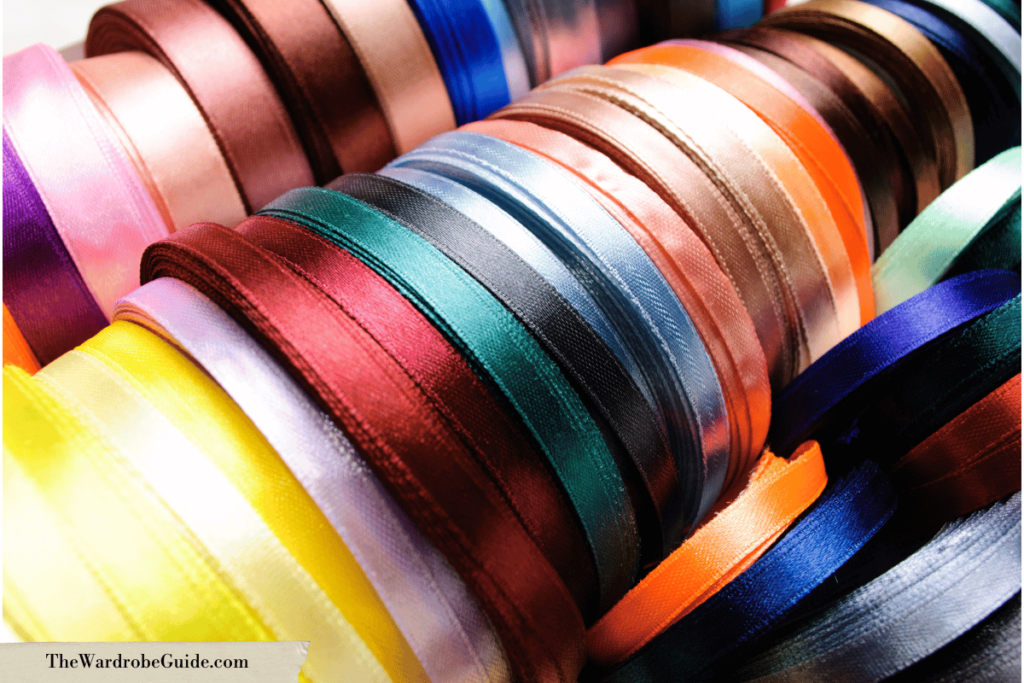
Different Types of Labels Popular in Theatre
Blank Labels– These can be bought by the sleeve at Manhattan Wardrobe Supply. They are very simple and basic. They can also be cut in half horizontally to create smaller labels for T-shirts and such.
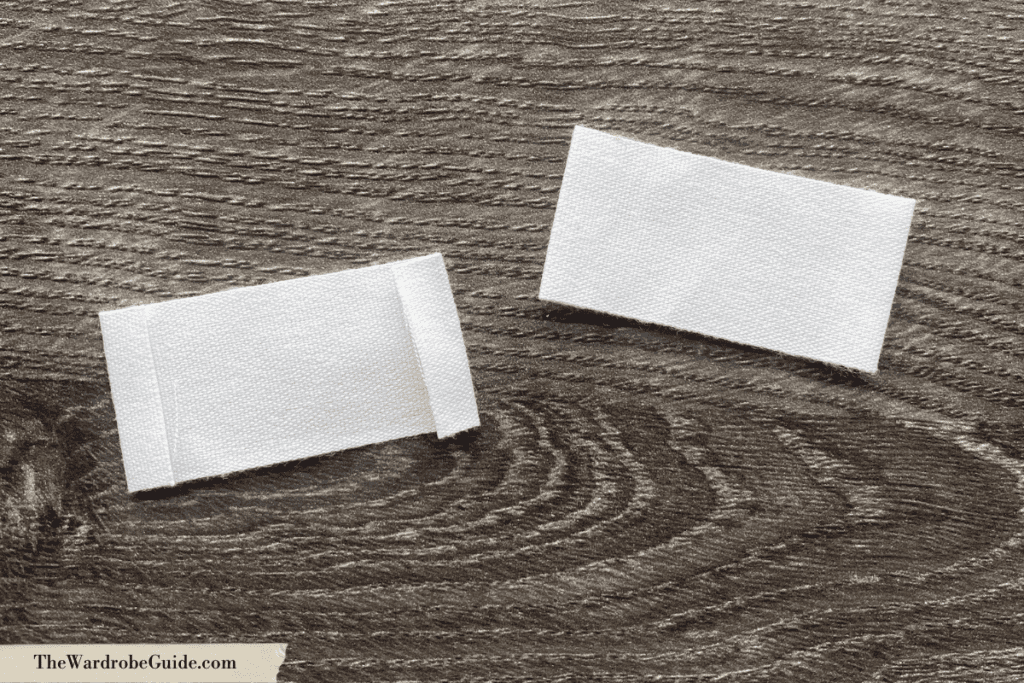
Bias Tape or Twill Tape -Can be used for labeling delicate material where stitches might be more visible. Sometimes, you can use a black twill and a silver Sharpie if a white label would be too visible. Depending on the garment, you might only have space for a small label with only the actor’s number on it. With these labels, make sure you fold the edges of the label under to prevent your label from fraying.
Printable labels– Some supervisors opt for labels to be printed on thermal printers, or using special fabric paper that can be purchased from companies such as Avery. These might be preferred because all the information on the label can be typed on the computer. When typed, the information might not fade as fast as a pen.
Custom Made labels– There are also multiple businesses that print custom labels. Some companies have websites where you can create your design. Other companies might require you to create your design on a website such as Canva and upload it.
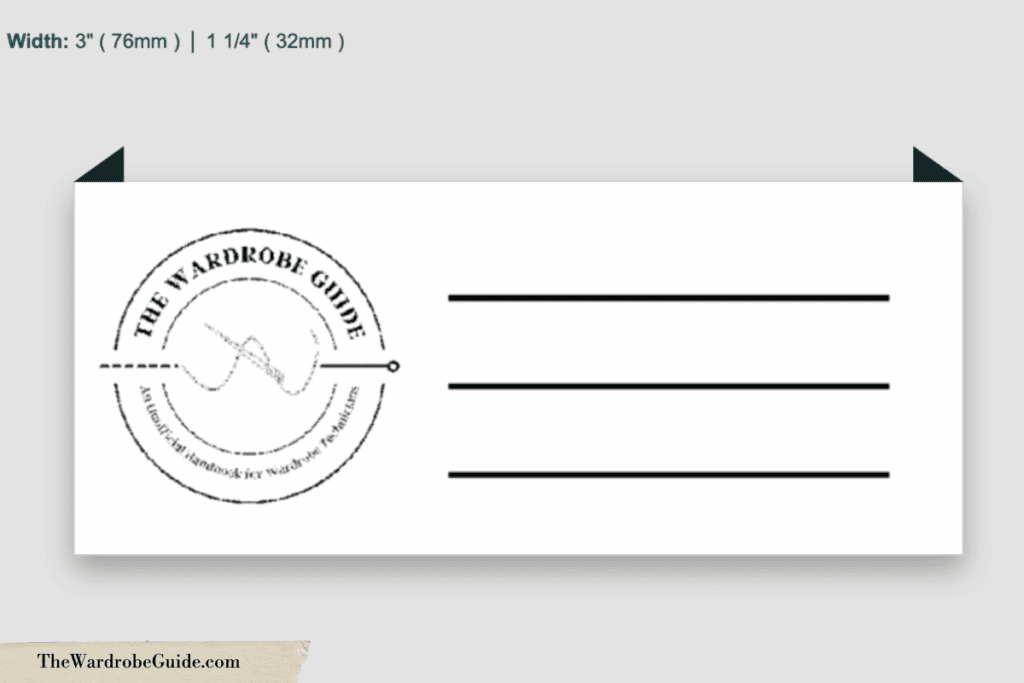
Where to Place a Label
When you are placing a label in a costume, there are a couple of things to consider. First, you want to account for the fabric that the costume is made of. If it is something delicate or see-through, your regular-sized labels might not work.
You also don’t want to cover the tags from the store with your labels. If there comes a time when a piece needs to be repurchased, you want to be able to access the brands and the sizes of the item.
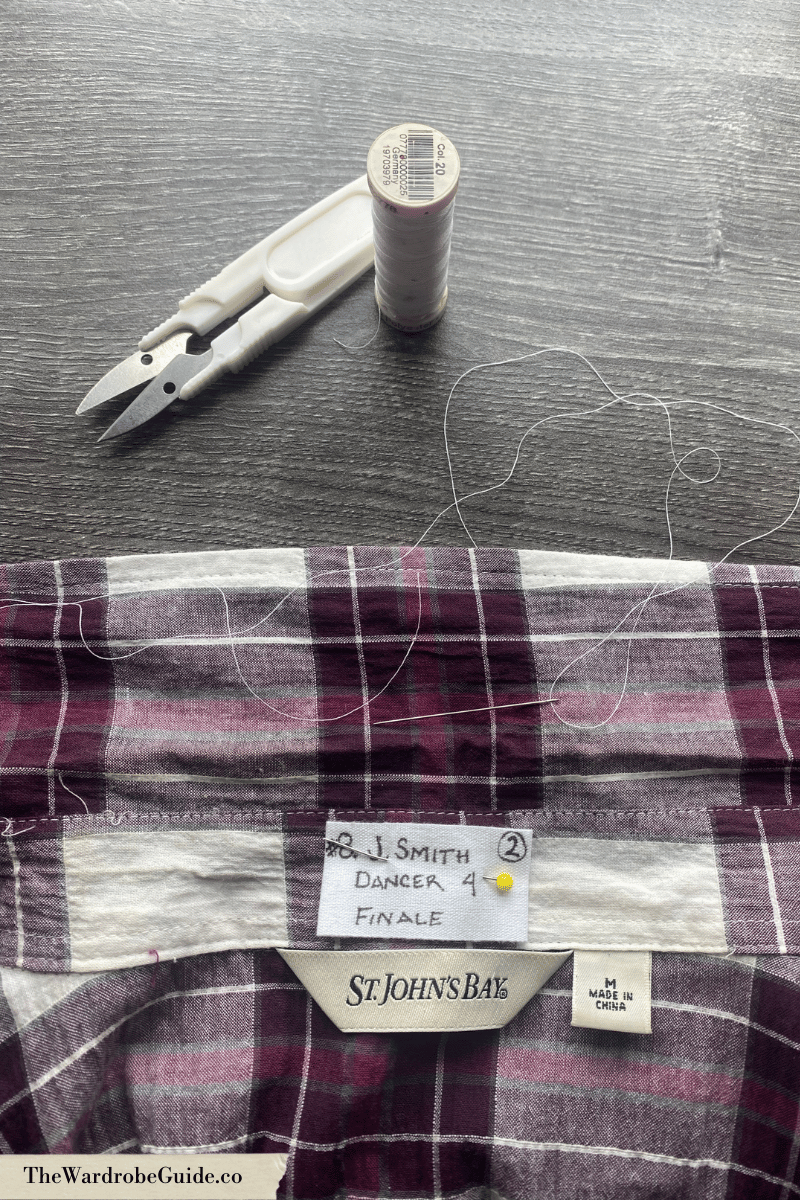
Can Labeling Differ for Different Productions?
Yes! Perhaps in a play where no one changes clothing, it might make the most sense for the labels to have only the actor’s names on them. You may also find that in certain musicals, labeling by musical number makes more sense than organizing costumes by scene number. You may encounter items in which a typical-sized tag can’t be hidden, so instead, you can only fit a small label with only a number on it. As the wardrobe supervisor, you should feel empowered to organize things the way in which it makes sense for you and your crew.
How To Sew In a Label
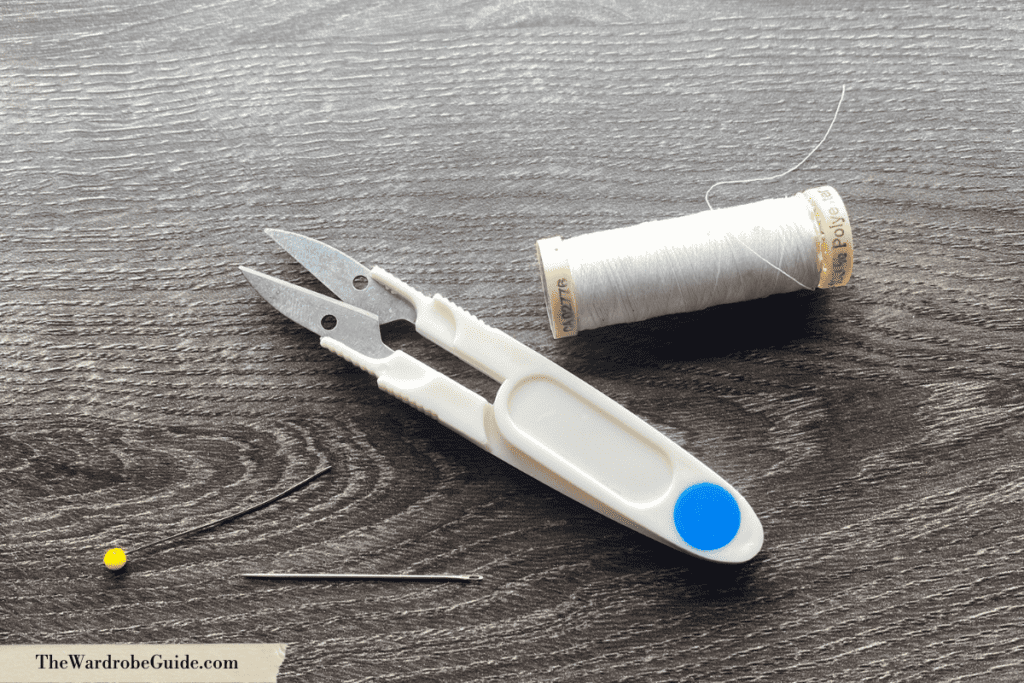
To stitch labels into garments, you only need very basic hand-sewing supplies: A hand needle, thread, scissors, and maybe a pin or two. Oh, and don’t forget the labels and your writing instrument, if needed!
Write the Information on your Label
Take your pen and write out the information you require on your label.
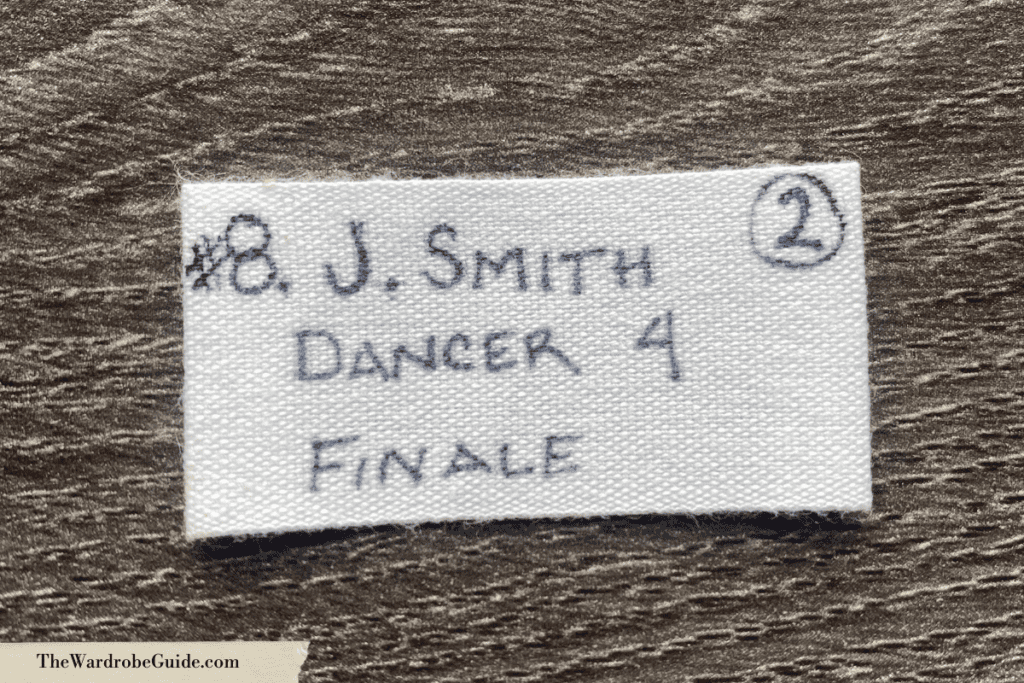
Prep Your Needle
When labeling costumes, it is also not uncommon to label using only black or white thread. This saves time switching out different colors for each label you stitch. However, if you are sewing a label onto something delicate, or where the stitches might be visible, it’s not uncommon to match your thread to the garment.
When stitching labels, your needle only needs to be loaded single-threaded.
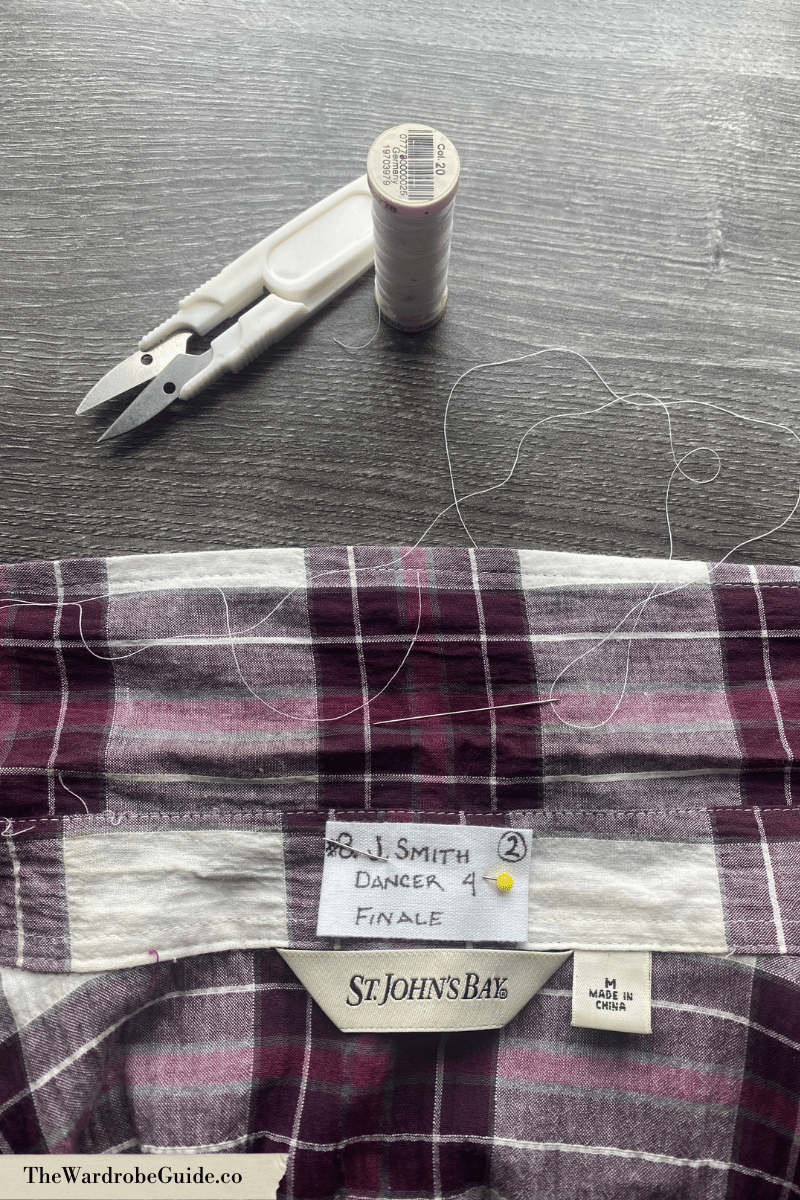
Stitch The Label
To stitch your label, use a medium-density whip stitch. You don’t want your stitches so tight that the costume puckers, but you also don’t want it so loose that the label easily falls out. As shown in the picture below, you only want to pick up a couple of fibers of the garment with each stitch. This will ensure that your label stitching is invisible as possible from the outside of the piece.

Finished!
Your label is straight and sits flat against the garment. It doesn’t obstruct any information. Labeling complete! Move on to your next garment.
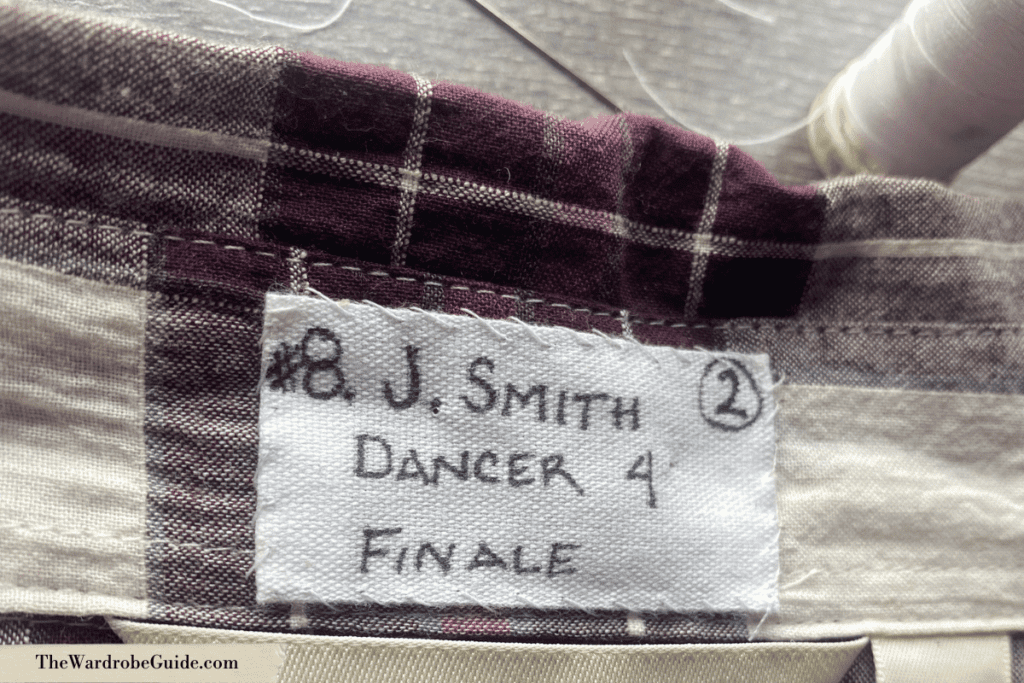
Labelling Shoes
When it comes to labelling shoes, many people might reach for a sharpie and a roll of tape. While we don’t like to say any way of doing something is “wrong”, per say, we have found a much more effective method. For our favorite shoe labelling method, make your label using a P Touch machine with white tape. Apply the label to the heel or the inner ankle of the shoe (or, if needed, a more hidden area). Then, cover the label with a clear tape such as packing tape to seal the label further onto the shoe. This way, the repeated friction from wear won’t cause the label to peel off.
In conclusion, labeling your theatre costumes is essential for keeping track of your costumes and making sure they are in good condition. The information on costume labels is key to keeping your backstage space organized and running smoothly. Is there a labeling method we did not touch on here? What are your favorite labeling techniques? Let us know in the comments!


